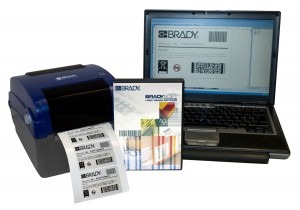
The Centre for Ecology and Hydrology has set up a National Fish Tissue Archive to study trends in chemical contamination in rivers.
Frozen samples are labelled using the Brady Freezerbondz ID system, specially developed to withstand long-term low-temperature storage.
Part of the Natural Environment Research Council, the Centre for Ecology and Hydrology (CEH) is the UK's Centre of Excellence for integrated research in terrestrial and freshwater ecosystems and their interaction with the atmosphere.
Based at the CEH site at Wallingford, Oxfordshire, researcher Monika Jurgens is involved in developing the National Fish Tissue Archive: 'A lot of the chemicals we use on a daily basis are discharged into rivers via sewage works.
'We can best study patterns of contamination and the potential effects on wildlife by monitoring substances that are taken up and concentrated in the tissues of fish.
'This gives us much more meaningful results than we could get from water sampling.
'Collected fish are frozen on site and homogenised in the laboratory before division into sub-samples.
'Some sub-samples are analysed immediately for the presence of PCBs, organochlorine pesticides, PBDEs and trace metals such as mercury - but most are placed in long-term storage at -80C.
'Retrospective monitoring will enable us to answer future questions regarding changes in levels of river pollution.
'Some of the first results from fish collected from the River Thames in 2007 showed the presence of PCBs, even though these substances were banned in the UK as far back as 1981,' she finished.
Labelling that remains intact during long-term storage at -80C is vital to the integrity of the National Fish Tissue Archive.
Any detached label would mean the loss of potentially valuable data.
The archive relies on Brady's Freezerbondz labels, printed using the BBP11 thermal-transfer printer.
According to Monika Jurgens, the Freezerbondz ID system has several important advantages: 'The special Freezerbondz labels are very reliable: they stick to the glass vials we use for our frozen-fish tissue samples and, just as importantly, they remain readable to maintain accurate sample identification in long-term storage.
'The BBP11 printer's small size means there is space for it in my office, which is convenient, and a wide variety of label types and sizes are available.
'Bradysoft software makes it simple to create labels combining text and barcodes,' Jurgens concluded.
The BBP11 thermal-transfer printer from Brady provides high-quality 300-dpi printing at low cost.
Freezerbondz labels can be applied to frozen surfaces, including glass and polypropylene stored in liquid nitrogen.
Bradysoft labelling software makes quick work of printing legible, durable and accurate labels.
Database import and 2D or linear barcoding are supported, while easy-to-use wizards help create new files and templates.




